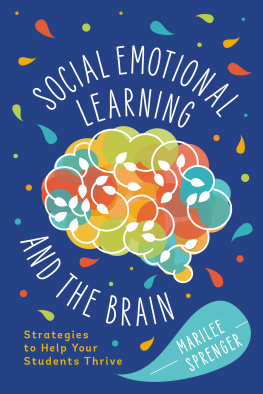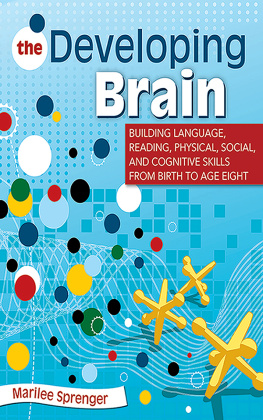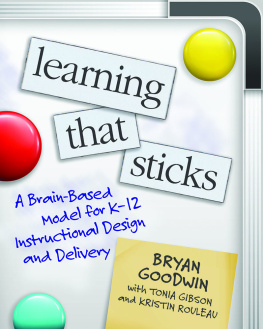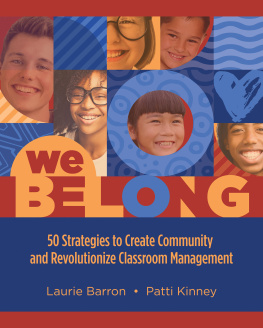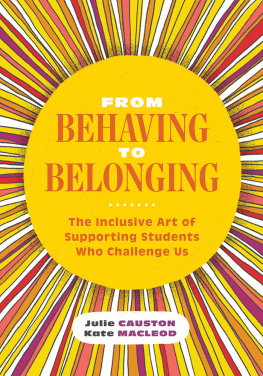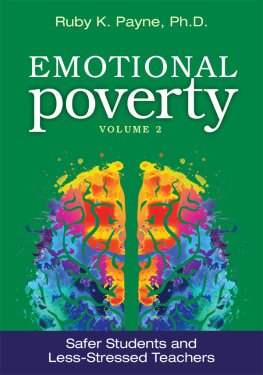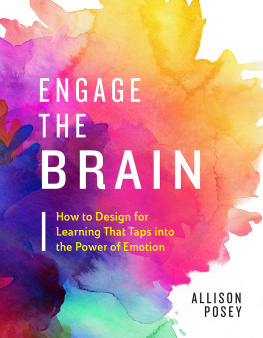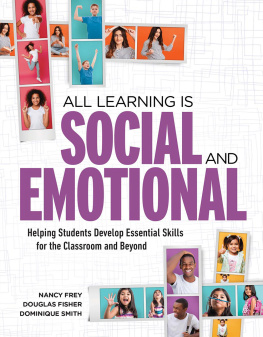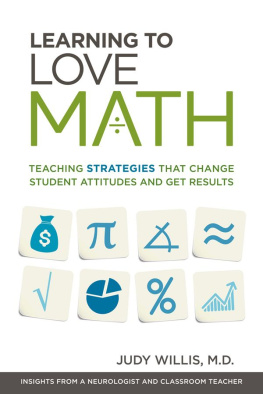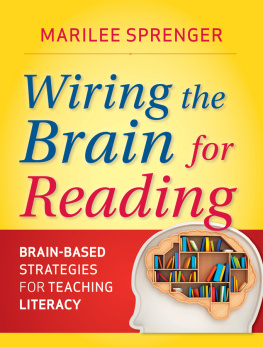Contents
Guide
Pages
ASCD Member Book / Also by the Author
....................

Many ASCD members received this book as a member benefit upon its initial release.
Learn more at www.ascd.org/memberbooks
Also by the Author
- 101 Strategies to Make Academic Vocabulary Stick
- Brain-Based Teaching in the Digital Age
- Everyday Vocabulary Strategies (Quick Reference Guide)
- How to Teach So Students Remember, 2nd Edition
- Teaching the Critical Vocabulary of the Common Core: 55 Words That Make or Break Student Understanding
- Vocab Rehab: How do I teach vocabulary effectively with limited time? (ASCD Arias)
Dedication
....................
I dedicate this book to all the students who needed an adult in their life to help them cope, overcome, and succeed. We didn't know better. We are trying to do better.
Acknowledgments
....................
There are many to thank for helping this book come to fruition. Stefani Roth, Genny Ostertag, and Allison Scott saw the need for a book connecting brain research to social-emotional learning. Without their support, this would not have come at such an important time for all students and educators. I wish to also thank Miriam Calderone, who always makes me sound so much better. She is an extraordinary editor, and I so appreciate her help.
The experts in the field are many, so I will try to mention those whose work affected me most. Dr. Nadine-Burke Harris, Dr. Bessel van der Kolk, Dr. Dan Siegel, Dr. David Sousa, Dr. Eric Jensen, Dr. Pat Wolfe, Dr. Judy Willis, Dr. Mary Helen Immordino-Yang, Dr. Bob Sapolsky, Dr. Bruce Perry, and Dr. Lori Desautels all added to my knowledge about the brain and the effects of emotions, stress, and trauma on the brain and body.
To Doug Fisher, Nancy Frey, Maurice Elias, Michele Borba, Marc Brackett, Matt Liebowitz, Lisa Barrett, Michael McKnight, Thomas Armstrong, Meena Srinivasan, and Mr. Fred Rogers: thank you all for your contributions to this field to help our students succeed in school and in life.
Always, I am grateful for the love and support of my husband, Scott.
Introduction
....................
Two things should become foundational in our education system: social-emotional learning (SEL) and trauma-informed practices. As educators, we know that many of our students have been affected by adverse childhood experiences (ACEs) and that positive childhood experiences can counteract some of the resulting trauma. Social-emotional learning has the power to create some of those positive experiences. Furthermore, many of the SEL strategies overlap with those related to trauma-informed practices.
A recurring theme in this book is that every child has a story, and I hope that the information shared in the following pages will help rewrite some of those stories and reinforce others. The path for educators is clear: build relationships so students feel love and a sense of belonging; teach empathy so students feel understood and can provide understanding to others; make students self-aware so that feelings are understood; help students regulate feelings so they can attain and use prosocial skills; support students in becoming skilled in social awareness so they build an understanding of how to interact with people; teach students how to handle relationships so they can work and play with people who come from various backgrounds and cultures; and finally, teach students how to choose and make wise decisions that will affect the future.
It bears repeating: every child has a story. I have a story. I am one of those adults who grew up believing that I was not good enough, that I could not fit in (although I pretended to), let alone belong anywhere. I grew up with rules that no child should grow up with: don't show your feelings; never, ever cry or your mom will leave you; never trust othersespecially men (they will cheat and leave). I am one of every six adults who has experienced four or more ACEs during my lifetime (Centers for Disease Control and Prevention, n.d.). I know the fight-or-flight response well. As a result, my physical and mental health are at risk.
I am not sharing this information to elicit pity. Many people have had far worse experiences than mine. I did not live in poverty; I had two parents at home; I had the food, clothing, and shelter that I needed. I am sharing this information because of the two people who saved me, who literally kept me from the depression and despair hovering over me as a child, who made me realize that even though I never knew what would happen at home, I could go to the dependable, positive place that was school. Those two people were teachers. My 1st grade teacher, Miss Pauli, let me come in early to her beautiful, welcoming classroom, and she let me talk. She listened. She complimented my work and encouraged me. Fast-forward to 5th grade. Miss Williams made me feel important, that I was good enough. She is the reason, beyond any doubt, why I became a teacher. I wanted to make kids feel the way she had made me feel. She listened, she cared, she touchedgentle hugs and pats on the head or shoulderand she checked in throughout the day to make sure we were all OK. A few other people were positive influences along the way, and I was OK until my first depressive episode in college. I eventually sought the help I needed, and I am doing well.
But I'm worried about the kids. According to John Medina (2017), humans today could live to be 115 to 122, under ideal conditions. Perhaps those conditions include healthy eating and getting enough exercise, but they must certainly also include lower levels of stress, positive relationships, family ties (within the family you were born into or the family you create), feeling empathy for and from others, and having a sense of belonging. Social-emotional learning addresses all those conditions. Furthermore, SEL improves academic achievement by an average of 11 percent, increases appropriate social behavior, improves students' attitudes, and reduces depression and stress (Durlak, Weissberg, Dymnicki, Taylor, & Schellinger, 2011).
I have been a student of the brain since 1992. I have traveled, trained, and spoken with educational leader and author Eric Jensen, who has taught me much about the brain and how to find out more. Through my research, I have identified the connections in the brain that are related to the social-emotional learning competencies delineated by the Collaborative for Academic, Social, and Emotional Learning (CASEL): self-awareness, self-management, social awareness, relationship skills, and responsible decision making. This organization, which began as a group of educators and researchers committed to advancing social-emotional learning, has had a huge impact in this area for more than 20 years.
By following the work of Daniel Goleman, one of the cofounders of CASEL and author of the groundbreaking book Emotional Intelligence (1995), and the work of neuroscientists such as Bessel van der Kolk (2014), we can see how SEL affects various areas of the brain. For instance, in this book you will learn how our "gut feelings" are directly related to the decision-making areas in our brain.
In reading the work of Daniel Kahneman, author of the best-selling book

